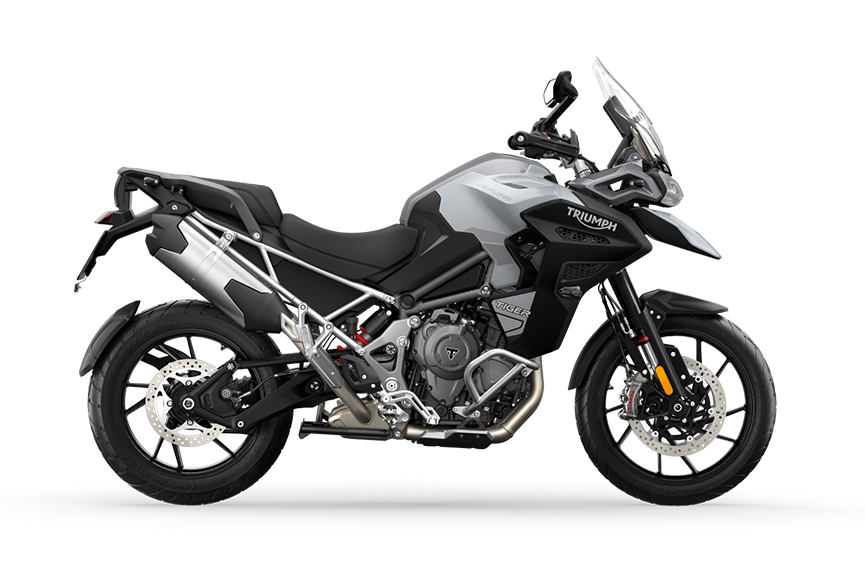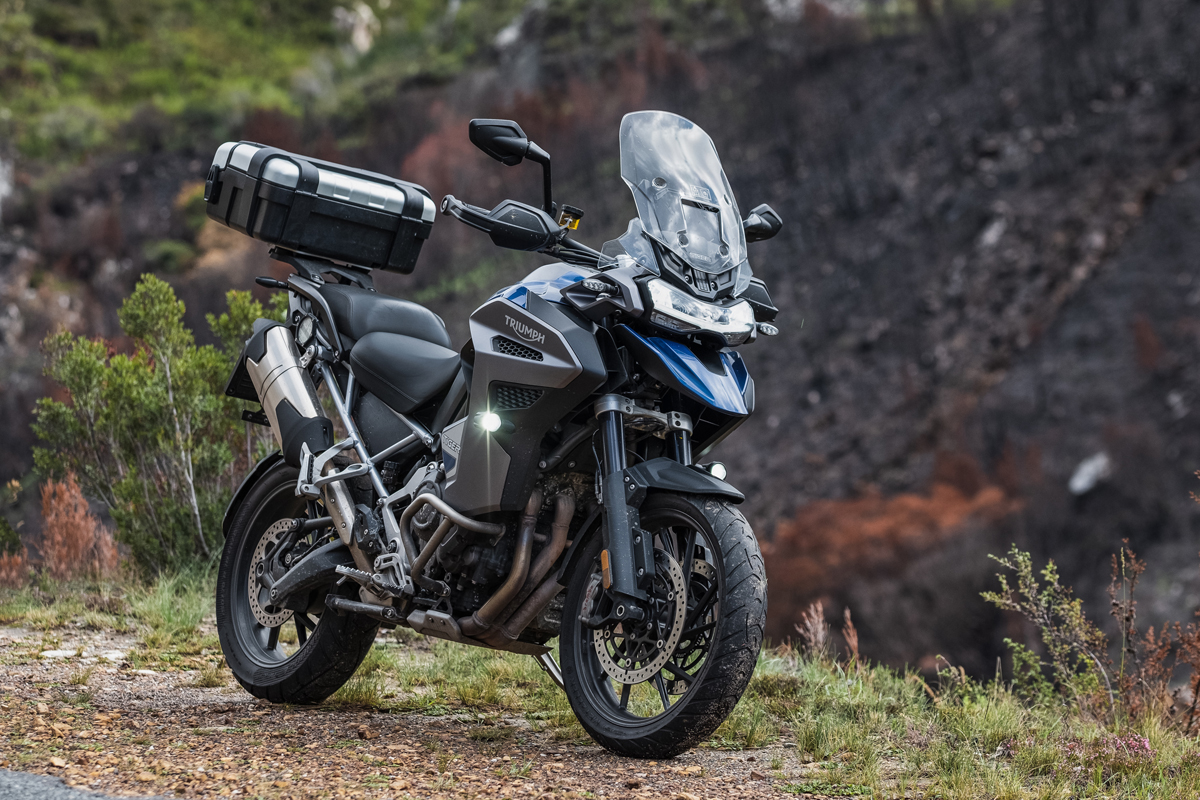
There’s a well-worn South African proverb that goes, “I’m not planning to go off-road, but I want to know that if I do want to go off-road, I can.” It’s the reason that the suburbs are crawling with squeaky clean snorkel- and roof rack-equipped Land Rovers, and it’s the reason that adventure bikes sell so well.
If you resemble that comment, don’t fret—there’s no judgement here. If your adventure bike hasn’t covered even a metre of dirt, it just means that you know something that many others don’t; adventure bikes are great road bikes. Case in point: the Triumph Tiger 1200 GT Explorer.
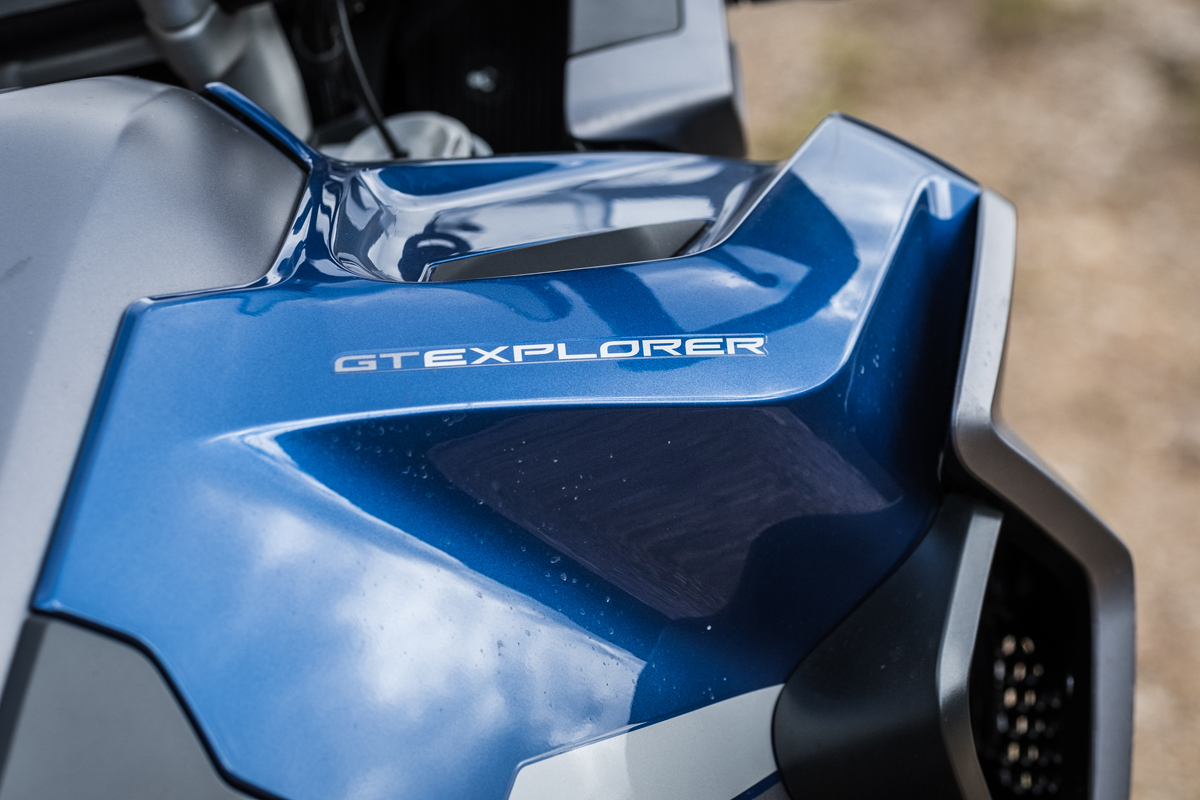
“It’s a very underrated motorcycle,” says Michael Romeo at Triumph Cape Town of the Tiger 1200 GT Explorer. Unsurprisingly, most people that wander into the showroom gravitate to the GT’s gnarlier sibling, the Rally, with its bigger wheels and longer suspension. But if they’re honest about their needs, the GT might just be the better option.
To demystify the nomenclature for a second, ‘GT’ stands for ‘Grand Touring,’ and ‘Rally’ means ‘full send on dirt’. The Tiger 1200 comes in GT and Rally models, each of which comes in ‘Pro’ and ‘Explorer’ variants, totalling four bikes in the range. Phew.
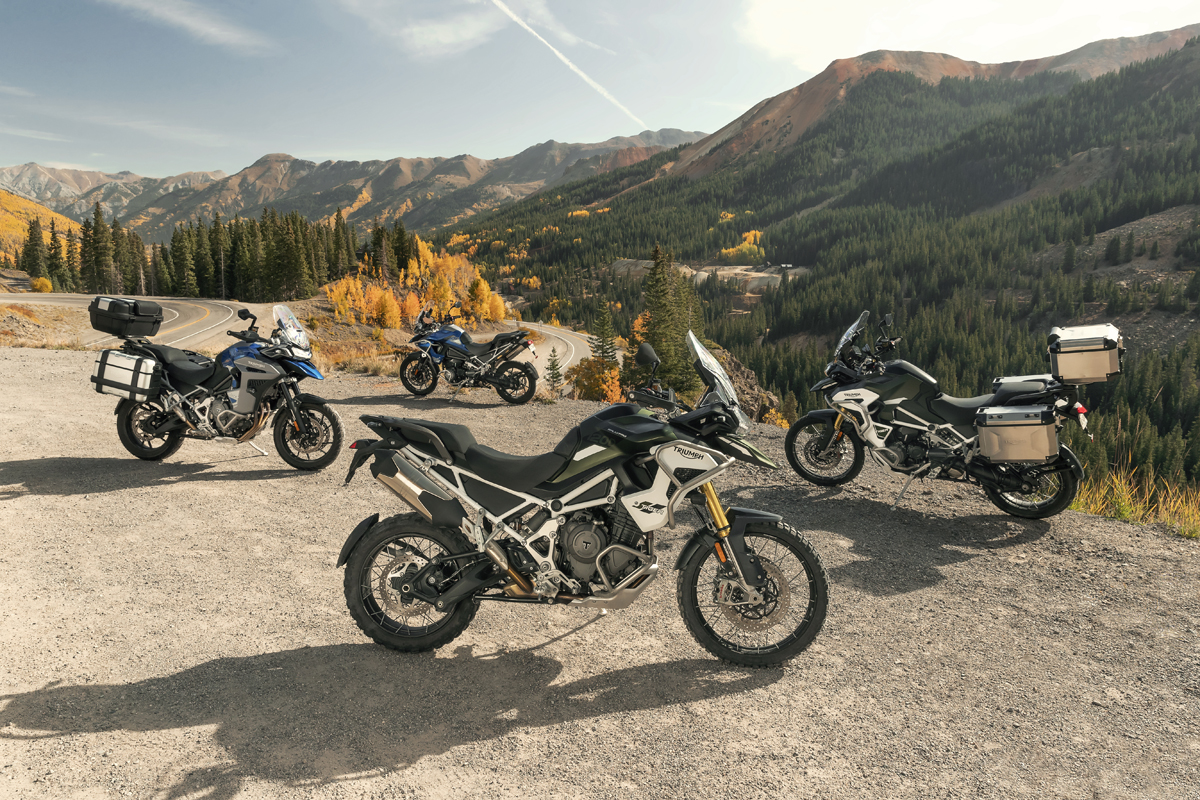
Planning to split your on- and off-road riding down the middle? Love to go full send when the pavement ends? A sucker for wrestling a big rig through sketchy terrain? By all means, throw your wallet at Tiger Rally Pro or Rally Explorer. I’ve ridden them both on and off the asphalt, and they are highly capable bikes in almost any scenario.
But if you’re going to spend most of your time on the tarmac, with short stints on well-manicured gravel roads, the GT series is where it’s at. And if you like to cover major mileage on two wheels, the GT Explorer is really where it’s at.
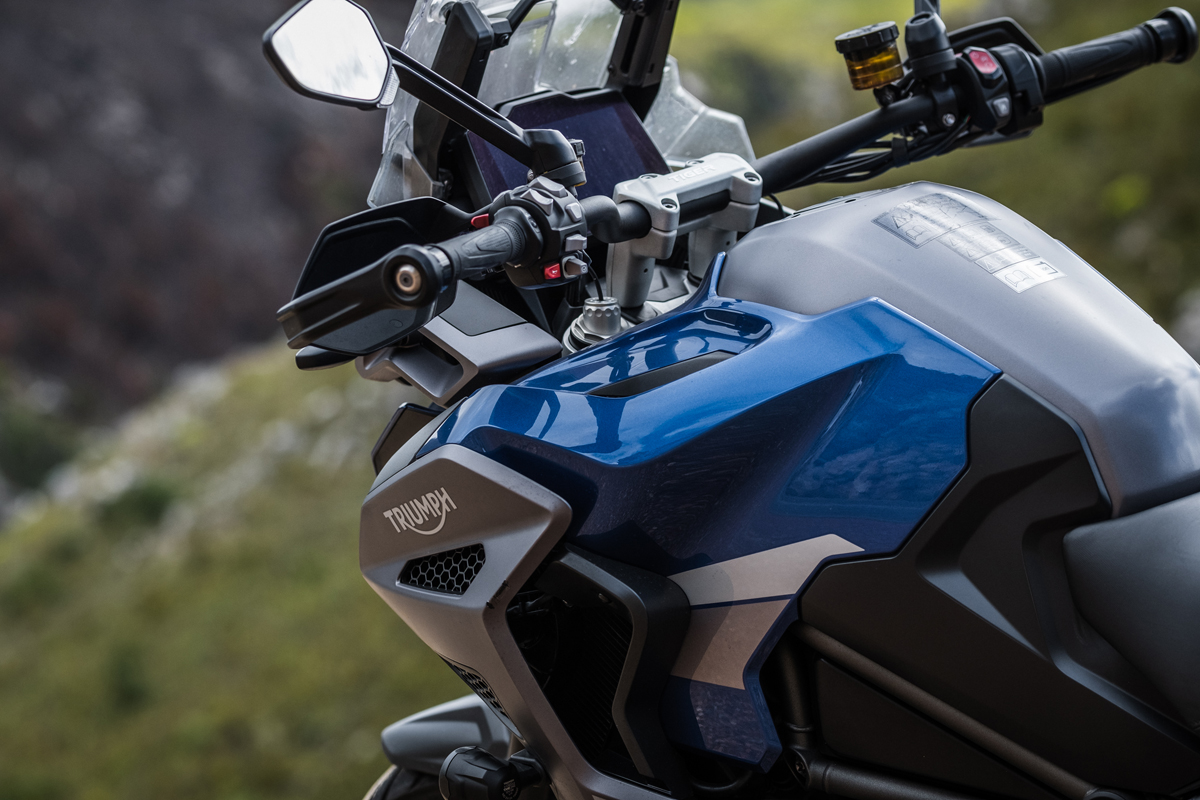
I’ve sampled all four Tiger 1200 variants—but when Triumph Cape Town offered me a choice for some one-on-one time, I picked the GT Explorer and pointed it towards the countryside.
On the open road, the Tiger 1200 GT Explorer is a beast. With 200 mm of suspension travel at both ends (versus the Rally’s 220 mm), and a 19F/18R wheel pairing (versus the Rally’s 21F/18R), it has a planted feel that suits blacktop riding, without sacrificing all of its dual-sport ability.
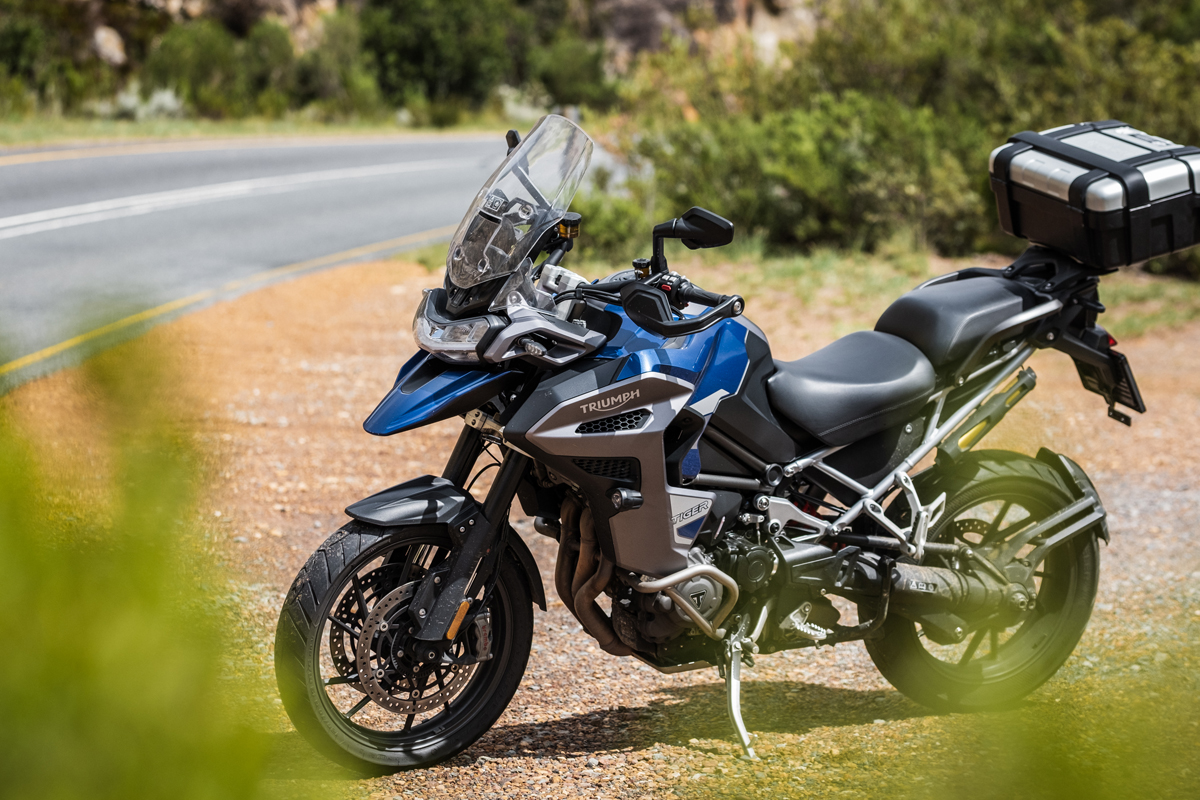
Triumph have made noise about the new and improved Tiger 1200s significantly reduced weight and sharpened chassis, and both are a tangible improvement over the outgoing model. But the real magic here—particularly for long days in the saddle—is the semi-active electronic suspension. It adapts to the road surface and your riding style, conjuring metaphors about magic carpet rides.
Am I gushing a little? Yes. But I’m also telling the truth; it really is that good. When I was handed the keys to the GT Explorer, the suspension was already set to ‘automatic’… and I didn’t touch it once during my tenure with it.
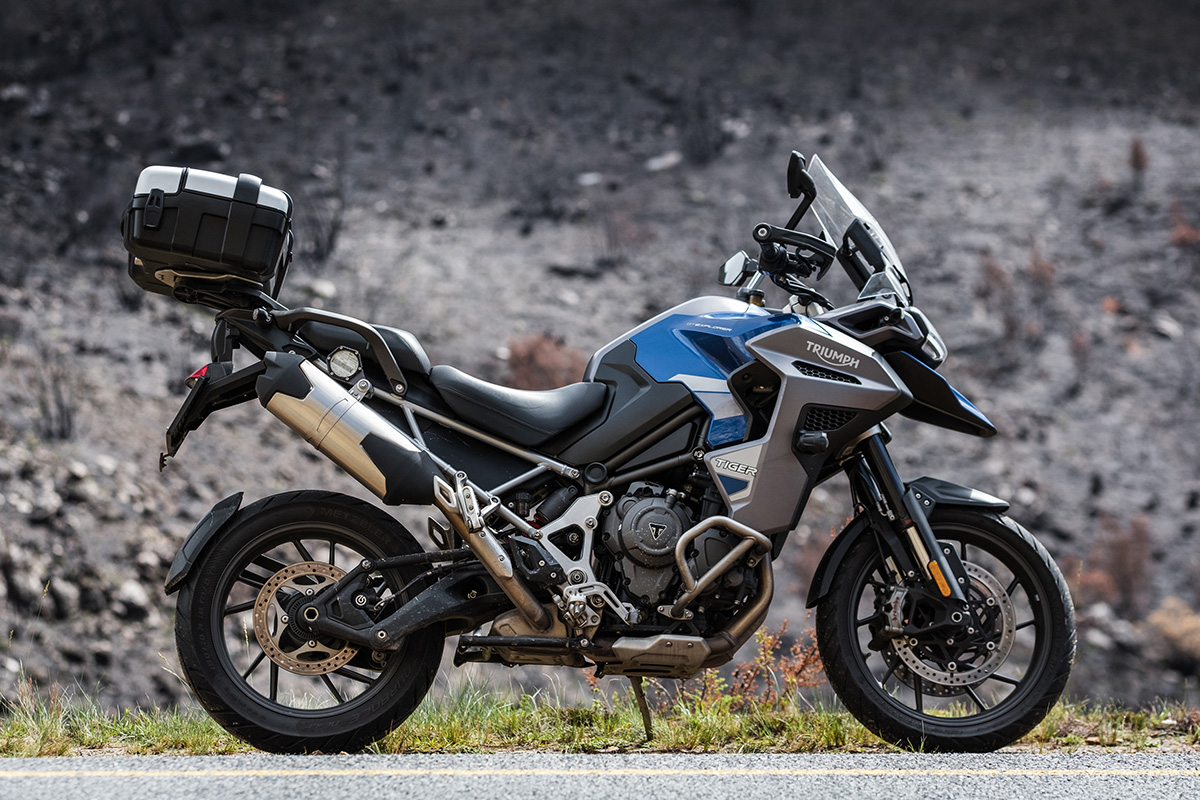
My regular test ride routes (a couple of which I mashed together for an extended ride on one particular day) combine some of the Western Cape’s best mountain passes with some of its most scenic backroads. The GT Explorer’s semi-active suspension smoothes out road noise on long stretches, but it also helps this big rig rail corners harder than it has any business doing. It works without you having to worry about it, which is why it gets 10/10 on my scorecard.
The fully-loaded test unit I was riding also came stacked with heated grips and seats (yes, plural)—a must on any self-respecting touring bike. Also fitted was the standard-issue adjustable screen that adorns the entire Tiger 1200 range. I love how easy it is to slide up and down with one hand, but an extra inch or two of height wouldn’t go amiss. The Explorer adds little deflector screens on either side, which are welcomed.
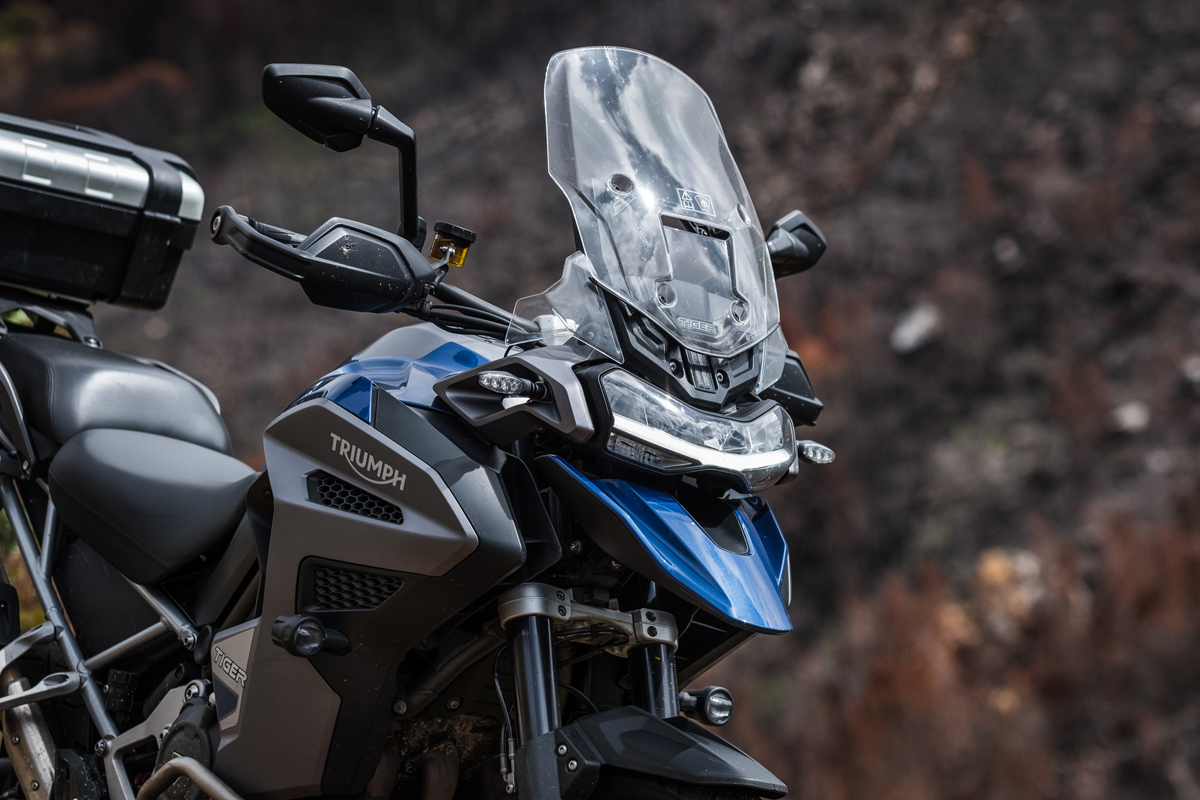
Other creature comforts include Triumph’s optional modular luggage system. My bike was fitted with a top box that looked suspiciously like a pannier set on its side—because that’s exactly what it was.
The lockable unit, available in various sizes, is designed to fit either onto a top box base plate or luggage side racks. Handy if you don’t feel like buying a full set of pieces, and want to adapt your bike’s carrying capabilities to suit your riding plans. Although not as deep as some ‘regular’ top boxes, it sports enough space to carry a day’s worth of riding essentials (a helmet won’t fit though).
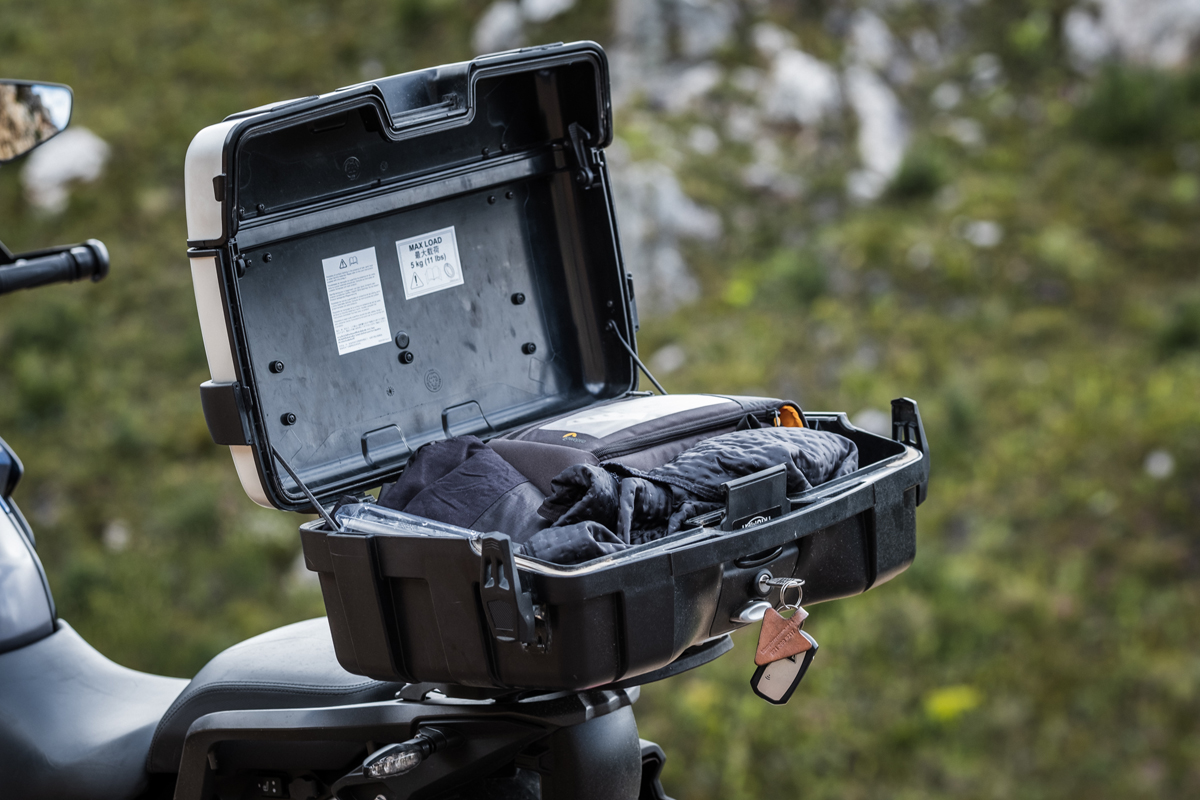
Add these all up, along with the GT Explorer’s whopping 30 l fuel tank, and you have a bike that, if I’m being honest, I’d probably pick for long-range touring over most purely road-focused road tourers. But that’s also because I’m a tall dude, measuring in at about 1,86 m with a wet weight to match. So I’m generally the most comfortable on adventure bikes, with their longer pegs-to-seat-to-handlebar proportions.
As an added bonus, the Tiger 1200’s seat is adjustable between two different height settings. And it’s an easy adjustment to make, too, requiring a grand total of zero tools.
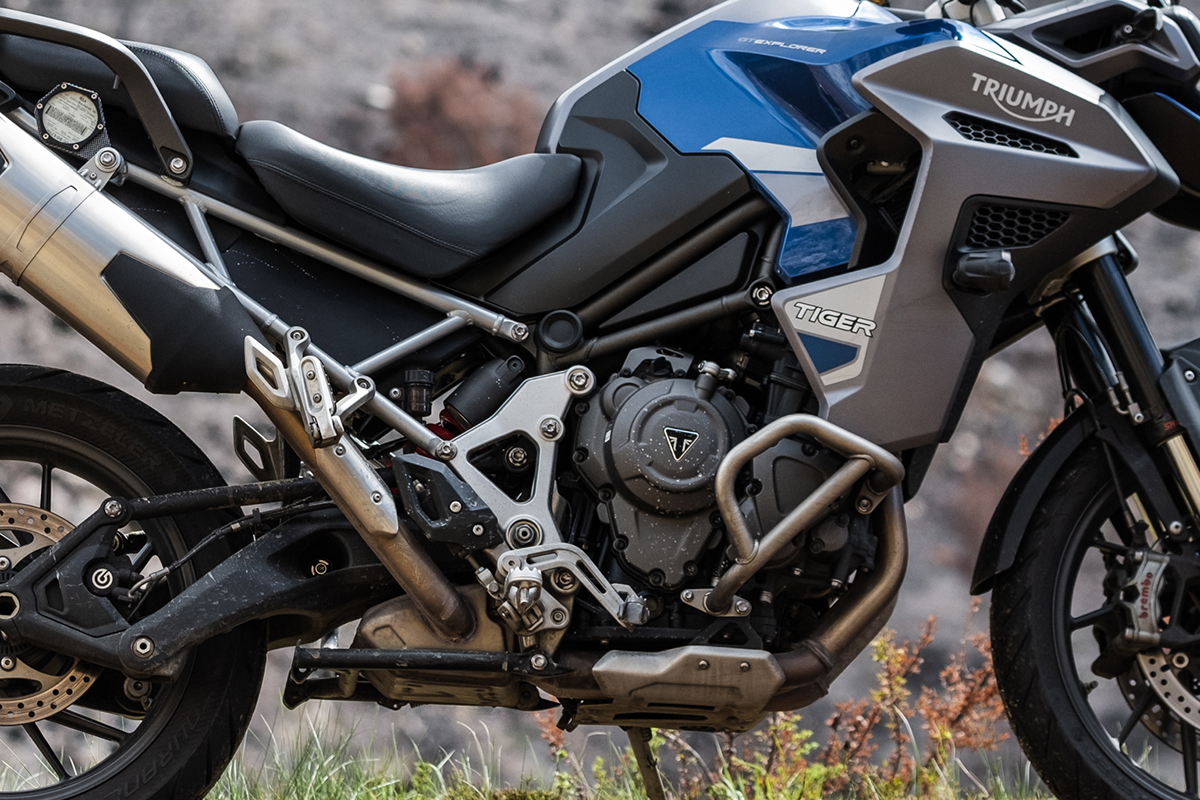
Oh, and it would totally be remiss of me not to mention the Tiger 1200’s engine—which is both its greatest asset and one of the few niggles I have with the bike. The 1,160 cc triple-cylinder mill feels and sounds absolutely bananas when you get on the gas. And with 148 hp and 130 Nm on tap, it’s more than powerful enough for most riders’ needs.
Triumph have done well to balance a predictable throttle feel and smooth fuel mappings with all the character and vibe that we’ve come to expect from their triples. But that signature ‘vibe’ is also a drawback. Point-and-squirt riding is buckets of fun—but on the open road, there’s a very palpable tingle through the grips.
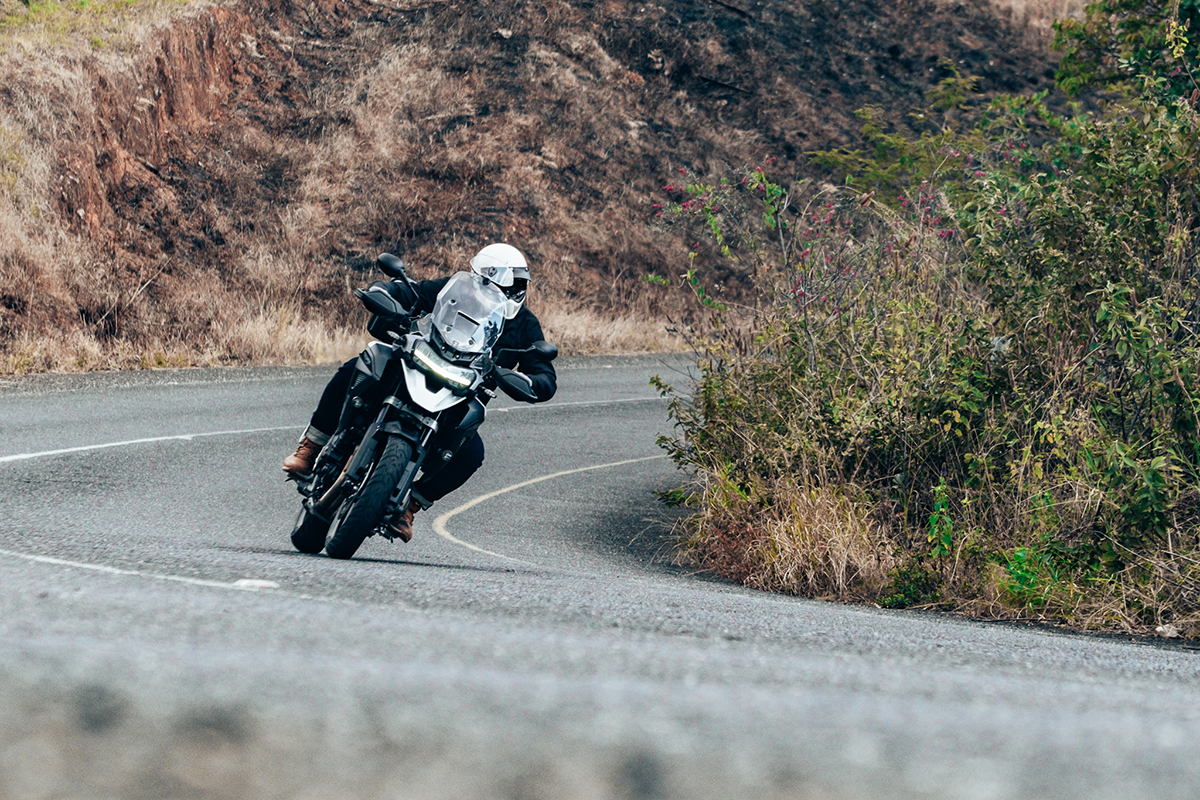
On the upside, there’s little to no vibration through the pegs, even with the removable rubber inserts out. And the seat is couch-like in its cushiness. But if it were my money, I’d ask Triumph to experiment with better grips or rubber-mounted risers.
Other long-road-friendly amenities include cruise control, LED lighting with a daytime running light and fog lights, and a TFT display with Triumph’s full suite of Bluetooth-enabled snazzery—including turn-by-turn navigation. I’m not the biggest fan of Triumph’s TFT displays (I find the design a bit cluttered and busy), but once you get used to the buttons, joysticks and menus, finding what you need is a breeze possible.
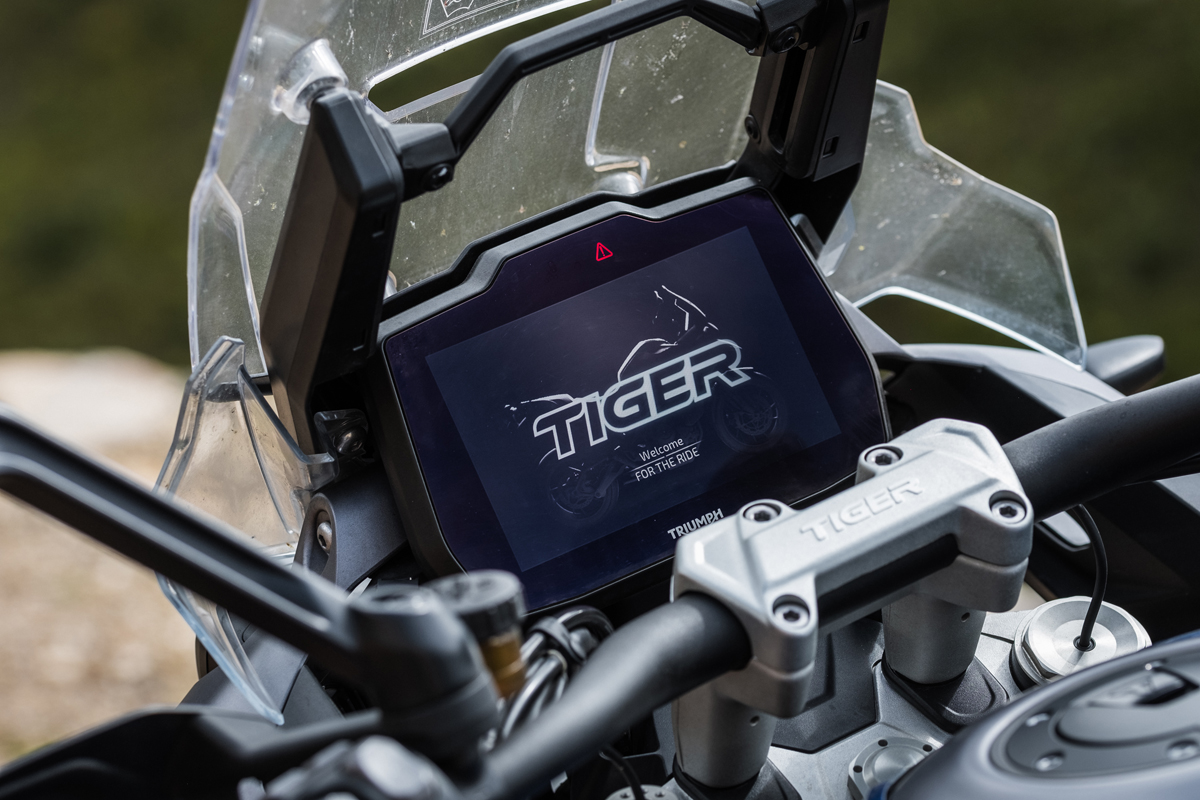
It also took me more than a few tries to get my phone and the bike to actually talk to each other, mostly because Triumph’s app is very particular about how you need to pair things up. But once I had it connected, the onboard nav system was particularly handy for navigating a part of the backcountry that I regularly get lost in.
So, would I take the Triumph Tiger 1200 GT Explorer on dirt? Absolutely, but within reason. But I didn’t on this outing… and in the process, I reminded myself just how good big, stonking adventure bikes are as road tourers.
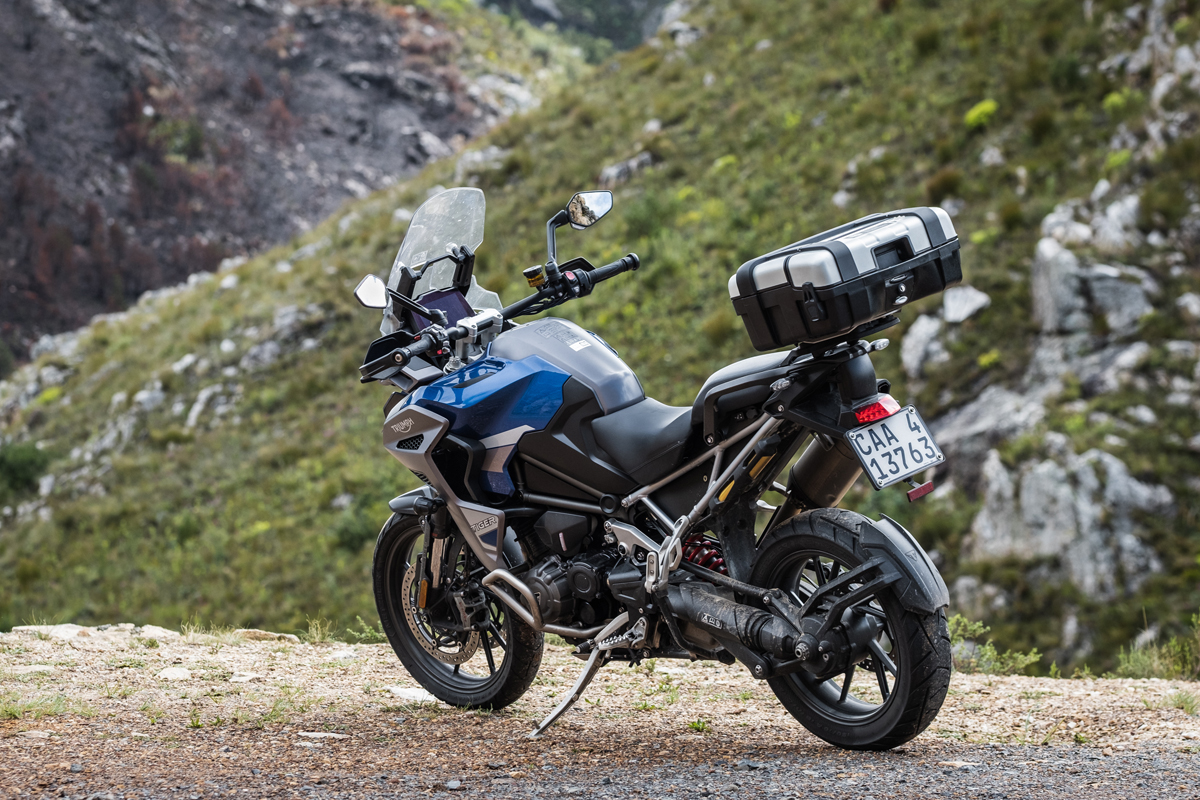
Triumph Tiger 1200 GT Explorer
For more information on the bike featured in this article, click on the link below…




